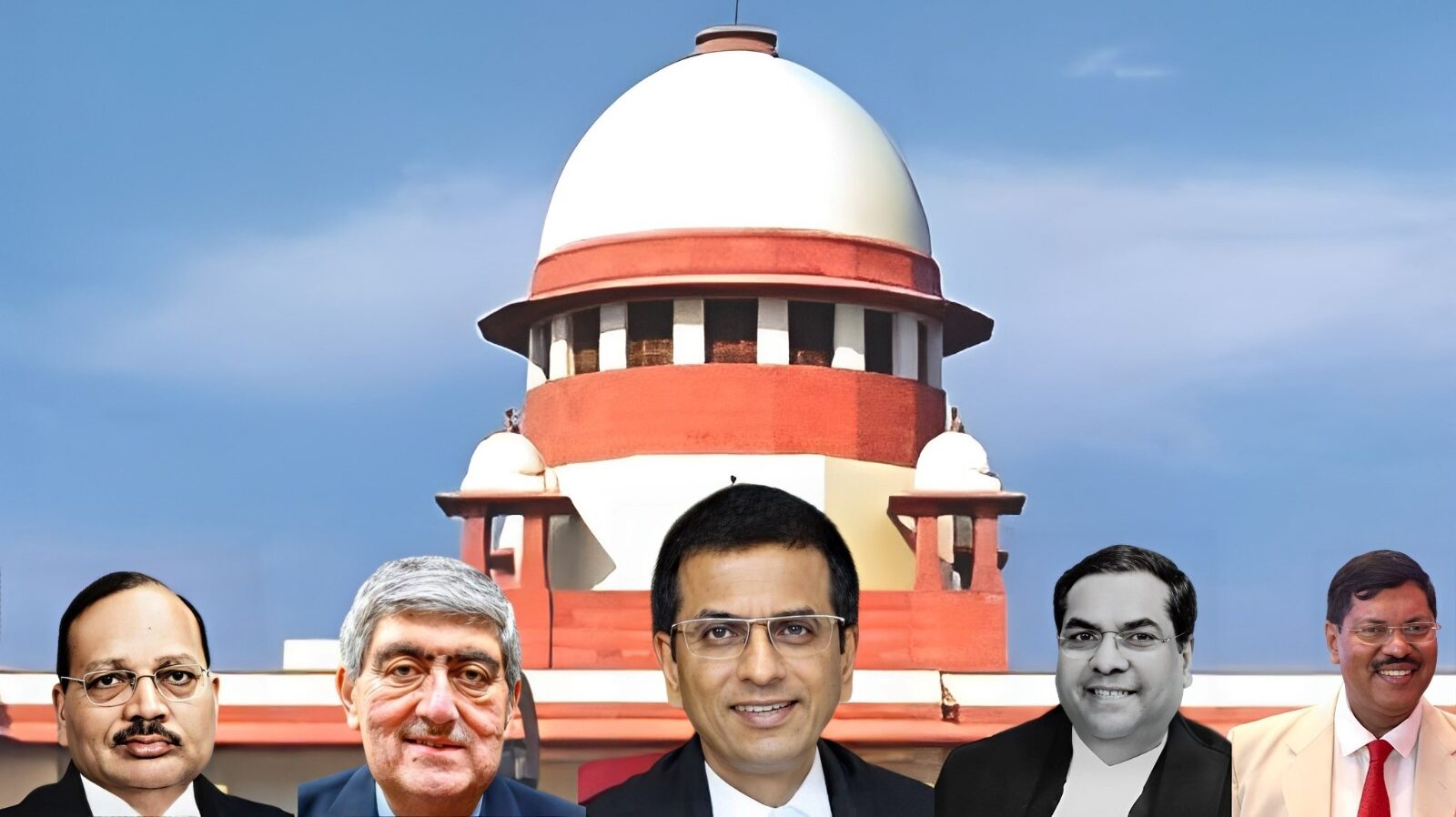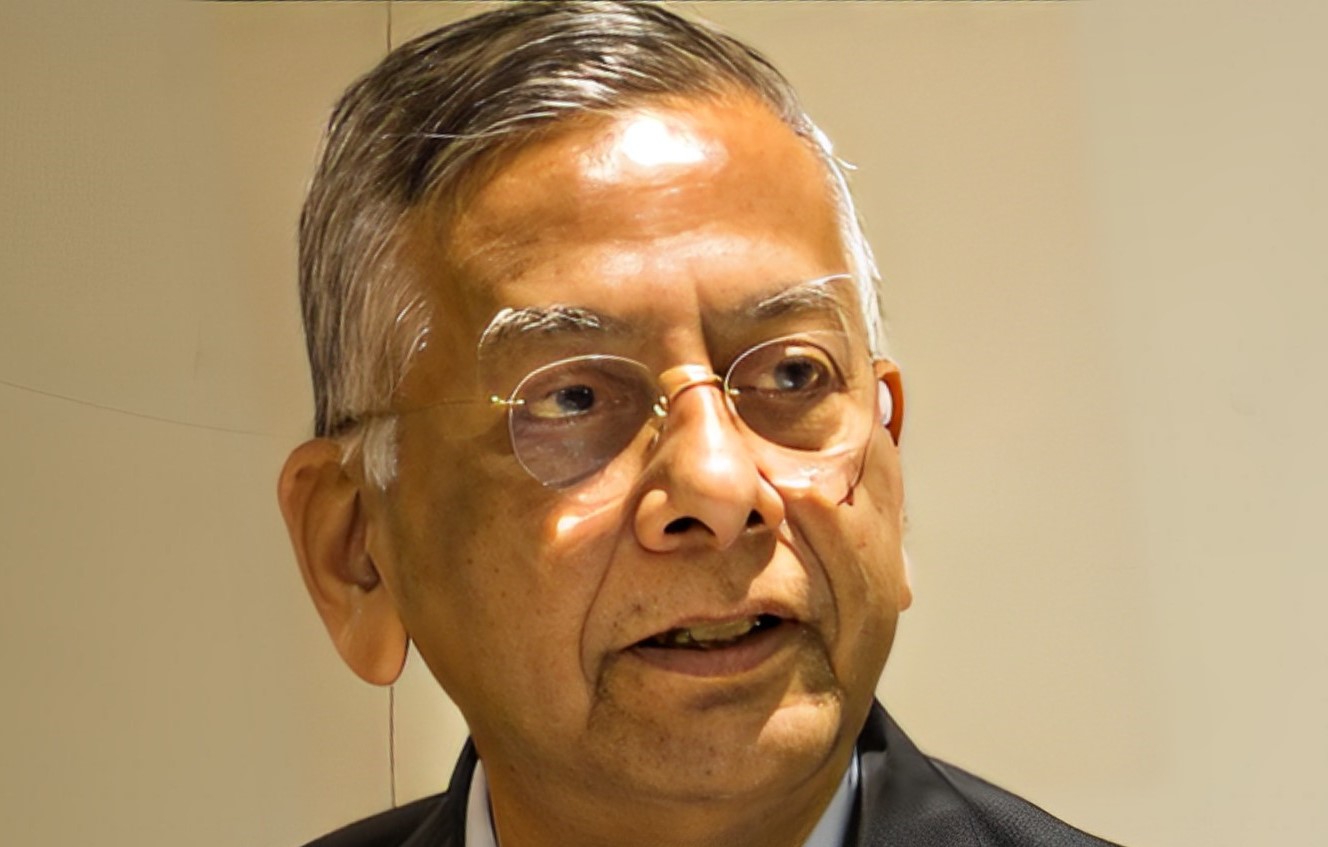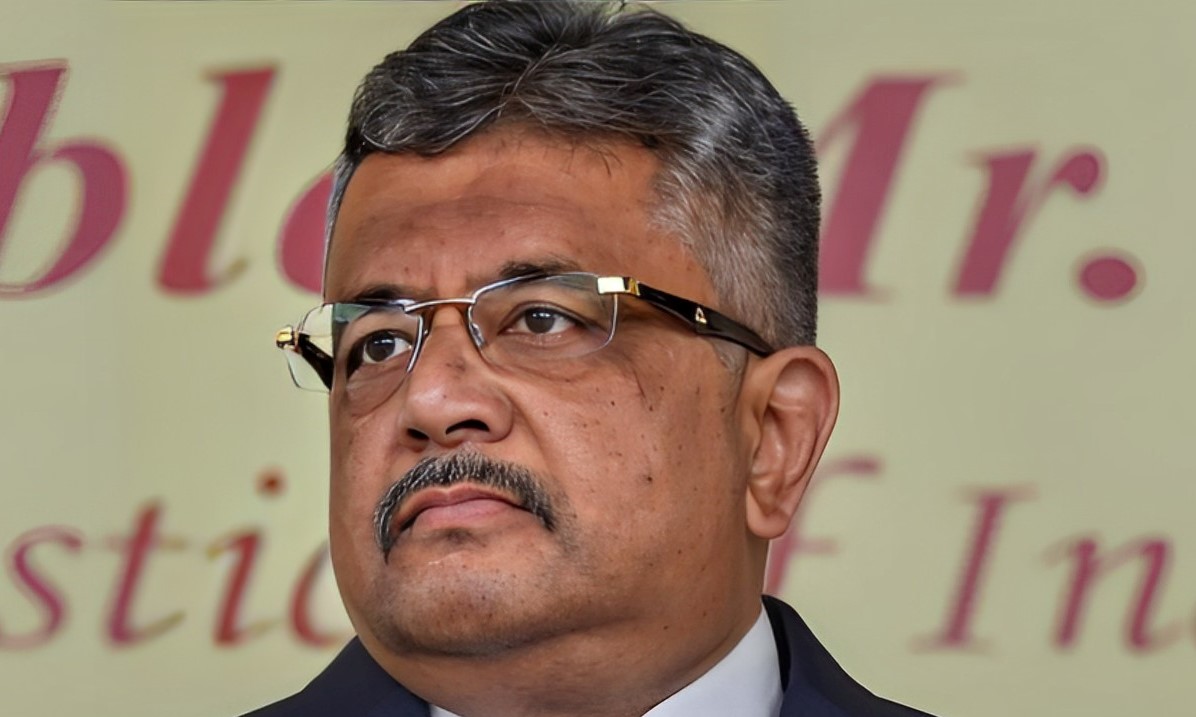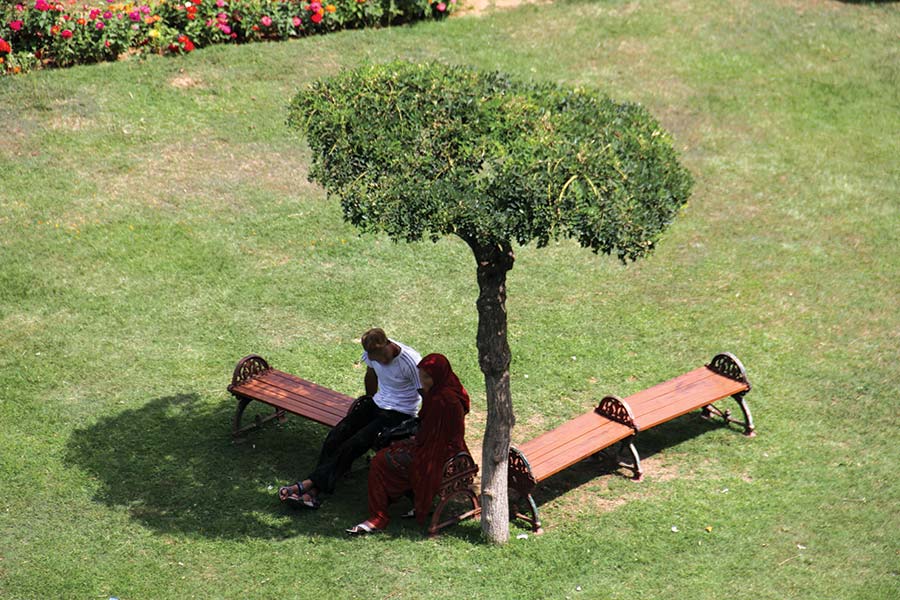On Day 10 of the hearing in a batch of petitions challenging the August 5, 2019 decision to put an end to the autonomy guaranteed to Jammu and Kashmir under Article 370 of the Constitution, the Attorney General of India R Venkataramani and the Solicitor General of India Tushar Mehta argued that the 2019 actions were just, necessary and a rightful exercise of power, reports Gursimran Kaur Bakshi

“OBJECTIVITY is not neutrality,” the Attorney General of India R Venkataramani began his submissions with this statement.
He followed it with a quote from Abraham Lincoln, “We should not lose the nation and preserve a Constitution.”
On Day 10 of the hearings In Re Article 370, the court finally began hearing the submissions of the respondents.
Venkataramani and Solicitor General of India Tushar Mehta are representing the main respondent, the Union of India.
For nine days, a five-judge Constitution Bench, headed by Chief Justice of India Dr DY Chandrachud and also comprising Justices SK Kaul, Sanjiv Khanna, BR Gavai and Surya Kant has been hearing petitioners challenging the de-operationalisation of Article 370.
Summary of the Attorney General’s arguments
Venkataramani began his submissions by assuring the court that the Union government has considered the objective and neutrality required in this matter.
He asked the court to appreciate the difference between objectivity and neutrality.
Sovereignty lost
At the outset, Venkataramani submitted that there is no “factual or legal foundation” for any argument that a part or whole of the sovereignty of Jammu and Kashmir (J&K) survived post accession.
He said: “On a combined reading of the Instrument of Accession and the proclamation [Constitution (Application to Jammu and Kashmir) Order, 1954 (Presidential Order C.O. 48)] followed by adoption of Article 370, all traces of sovereignty, if any, were surrendered and disappeared.”
Objective of Article 370
Then, Venkataramani pursued arguments on the object of Article 370.
He said that the constitutional integration process of J&K with India was the ‘only’ object of Article 370.
It does not matter in what manner the integration is sought to be brought about, he added.
Venkataramani stated: “All principles and procedures pressed into service for the above purpose will always be considered subservient to this purpose.”
Exercise of authority of the President under Article 370
Further, he argued that the ‘power and deliberation authority’ of the President under Article 370 is “neither lost nor removed” by reason of its exercise over a period of time.
He stated that the scheme and architecture of Article 356, which provides in regards to the sustenance of the fabric of the nation, cannot be narrowed or compromised.
“The in terrorem arguments demanding course correction are linearly tailored and need not to be the touchstone for ex-ante tinkering with the undefinable state necessity potential of Part XVIII (emergency provisions)of the Indian Constitution,” he averred.

Article 370 did not cease to exist
Continuing with the above argument, Venkataramani averred that it cannot be said that Article 370 “erased itself without the intervention” of any positive law-making power.
Notably, various petitioner counsels have argued that Article 370 was “frozen in time” or that it “perished” after the Constituent Assembly of J&K ceased to exist in 1957.
Discretionary powers used beyond original purpose of Article 370 is for integration of the state
According to the Attorney General, Article 370 was conceived and designed to “aid the constitutional integration process” on the same lines as it happened for other states.
He added: “Its continued exercise over a period cannot be seen as a cloud over or distortion of its original purpose.”
“Any discretion exercised beyond its original purpose should be seen as introducing room for whittling the constitutional integration,” he averred.
Court may defer to the wisdom of the Parliament on choices made for border states
Venkataramani’s next argument was that ‘border states’ are a “special class of territories” of India. Their reorganisation under Article 3 of the Indian Constitution must deserve a distinct consideration.
He remarked: “The court will defer to the wisdom of the Parliament of India in the choices of action relating to border states.”
It should be noted that the Constitution (Application to Jammu and Kashmir) Order, 1954 (Presidential Order C.O. 48) amendment had inserted a proviso in Article 3 (formation of new states and alteration of areas, boundaries or names of existing states) of the Indian Constitution.
According to the proviso, no Bill altering the name or boundary of the State of J&K shall be introduced in the Parliament of India without the consent of the legislature of J&K.
However, The Jammu and Kashmir Reorganisation Bill, 2019 was introduced, which bifurcated the J&K into two Union territories, namely J&K and Ladakh, where the former retains a legislative assembly.
Plenary powers of the Parliament on external aggression
Venkataramani then moved to his arguments on the powers of the Parliament when faced with a situation of external aggression.
He stated that all instrumental measures in aid of discharge of duty under Article 355, including the Preamble of the Constitution, can be understood from the plenary power of the Parliament to engage in the reorganisation scheme under Article 3.
The plenary power to act under Article 3 is available even during President’s rule under Article 356.
He said: “Long-standing or similar measures in regard to reorganisation are not precluded. The availability of power is distinct from any due process.”
On federalism
Venkataramani briefly touched upon the issue of federalism. He said: “Neither asymmetrical federalism nor any other federal features have been infringed upon.”
He made this argument countering the submissions of the petitioners that the residuary legislative powers exercised by J&K was a part of a unique federalism promise offered by the Constitution of India on the accession of J&K with India.
On representative democracy
Venkataramani argued that no rights in relation to representative democracy have been taken away.
He clarified: “Reorganisation of states includes temporary or other rearrangement of rights to serve the integrity of federalism and the unity and integrity of the country.”
All rights are available for exercise only if unity and integrity are intact, he pointed out.

He further pointed out that the de-operationalisation of Article 370 has to be understood from the doctrine of necessity which is “flexible”.
In this context, he submitted: “The long history of internal disturbance, lack of availability of real measures of rights and justice are matters that can be legitimately taken into account for course rearrangement.”
He assured that the measures regarding Article 370 have been taken within due processes granted and to be pressed into service to act in exceptional circumstances.
Venkataramani concluded by stating: “All steps taken under C.O. 272 and 273 are within the standard set of provisions issued during the President’s rule and nothing arbitrarily designed has been provided for.”
He added: “All arguments of fraud on power are misconceived.”
This argument was in the context of the petitioners arguing that no constitutional procedure to de-operationalise Article 370 exists. The Union has politically manipulated the Constitution of India, to de-operationalise Article 370, the petitioners have argued.
After Venkataramani, Mehta commenced his arguments.
Tushar Mehta’s arguments
Mehta began his arguments by stating that the court, for the first time in 75 years, will understand the kind of privileges the people of J&K have been deprived of so far.
Mehta said that the stand taken by the petitioners that J&K’s “privilege cannot be taken away” is incorrect.
Article 370 a hindrance to the welfare of J&K
Mehta termed Article 370 as being “detrimental” for the flow of welfare schemes and constitutional rights from the Union of India to the residents of J&K.
He argued that post the de-operationalisation of Article 370, a larger number of fundamental rights including other constitutional rights will be conferred to the residence of J&K.
He submitted: “Now, the people of J&K will be fully at par with the rest of the brothers and sisters of this country.”
Psychological duality
Mehta told the Bench that because of claims around Article 370 to be temporary or permanent, “there exists a psychological duality in the minds of the people of a particular region”.
Mehta said: “Since the inception of the Indian Constitution, Article 370 has been a part and parcel of it. J&K is an inalienable and integral part of India.”
He added: “However, there remains a psychological duality. Either induced or otherwise.”
This psychological duality was taken advantage of by parties which are inimical to the interests of India, he concluded.
Loss of sovereignty on accession
Mehta briefly referred to Section 6 of the Government of India Act, 1935, to show that the moment the accession is complete, the sovereignty of the concerned State is lost. He continued: “Sovereignty is subsumed with the bigger sovereignty.”
The CJI asked Mehta about the consequence of accession. He replied to his own question that the consequence of accession is that independent states will be “united in a federation”.
To this, Mehta replied: “This is the first stage of losing sovereignty.”
The CJI then told Mehta to address whether sovereignty has components. He referred to the submissions made by different counsels for the petitioners that sovereignty has both internal and external components.
According to a submission made by senior advocate Dushyant Dave on the accession of J&K with India, only external sovereignty was lost.
The internal sovereignty, which can be understood from the residuary legislative powers exercised by the maharaja, was not lost, Dave had argued.
Mehta said he is ‘conscious’ of this submission and will address it later.
Sibal–Mehta fight over written submissions
In between Mehta’s submission, senior advocate Kapil Sibal told the court that the Union government had filed two new volumes of written submissions.
Sibal added: “I have no objections [with them filing new written submissions]. I do not believe in objecting to materials which are relevant for the court.”
Mehta asserted that the respondents had not submitted anything new. They had only bifurcated their submissions into different volumes.
Sibal did not agree to this clarification. He pointed out that the submissions are all new.
To this, Mehta said: “Let us not raise school children-like objections!”
Apart from Sibal, objections were also raised by senior advocates Gopal Sankaranarayanan and Chander Uday Singh.
Singh informed the court: “The learned Solicitor General’s written submissions, apart from the list of dates, have somehow increased from 18 pages to 139 pages.”
The nodal counsel for the petitioners’, Prasanna S., clarified that the written submissions were circulated last Sunday. However, he added: “We did not circulate the written submissions because the court did not allow it.”
Mehta quickly replied: “I have been informed that it was allowed by the court.”
Princely State should come at par with British provinces
Continuing his submissions, Mehta briefly talked about the position of the Indian National Congress (INC) in the late 1930s on the Princely States.
He pointed out that the INC wanted Princely States to join independent India on the same terms and with the same autonomy as the provinces of British India.
This was to ensure that the people get to be governed by a responsible government.
J&K not the only State with its own Constitution
Mehta refuted the argument of the petitioners that J&K was geographically unique because it had its own Constitution during the British rule in 1939 (Jammu and Kashmir Constitution Act, 1939). The Act established a council with a prime minister.
He said that the argument was ‘factually incorrect’ because 62 Princely States had their own constitutions.
Mehta added: “There were 62 Princely States in India which had their respective constitutions, whether having the nomenclature of ‘constitution’ or otherwise providing for a written code of governance, prepared in a very methodical way.”
He further said: “I am just trying to show that [the argument of the petitioners that] J&K had a special status from the beginning which continues till date is factually wrong.”
During the late 1930s, 286 other Princely States attempted to create their “Unions” by coming in together and had drafted “constitutions” for such proposed Unions.
For example, Princely States of present-day Saurashtra in Gujarat formed the United States of Kathiawar, with its own Constitution, which eventually surrendered its sovereignty to the Union of India.
Mehta’s submissions were in the context of Sibal’s arguments wherein he said that The Jammu and Kashmir Constitution Act, 1939 was unique because Maharaja Hari Singh had retained sovereignty and supremacy over all legislative, executive and judicial functions.
Draft instrument of accession common to all
Mehta also submitted that the draft instrument of accession was common to all independent states that acceded to India.
This submission becomes pertinent because petitioner counsel senior advocate Dinest Dwivedi has argued earlier that although the format of the accession was same, the conditions of accession were different for J&K.
Dwivedi has explained this as: “The conditions in favour of J&K are different. For instance, we were not bound by any future Constitution of India.”
“Internal sovereignty vests with the ruler. The Union of India cannot acquire land in Kashmir. The ruler would acquire the land and then give it to them,” Dwivedi has averred.
To buttress his argument on this point, Mehta took the example of Shahpura.
He explained: “The inauguration of Shahpura Constitution did not prevent the prince from signing the Instrument of Accession with the dominion of India in three areas namely, defence, external affairs and communications as many other Princely States did at that time.”
Mehta also referred to the Constitution of Manipur.
Manipur adopted a Constitution (Manipur State Constitution Act, 1947) on July 26, 1947, which according to Mehta, provided for fundamental rights and separation of powers, and recognised the maharaja within the constitutional mandate.
Mehta stated that the maharaja of Patna declared the setting up of a representation constitution-making body on 24 October, 1947.
Interestingly, he mentioned that Patna adopted a constitution at a time when the first draft of the Indian Constitution was ready.
CJI: Section 6 of Indian Independence Act gave confidence to Princely States
The CJI pointed out: “This [referring to Section 6 of the Indian Independence Act] was intended to create a sense of confidence in Princely States. That is, you are acceding to the Union, but we are giving you the ability to make reservations through the Instrument of Accession by virtue of which you will retain certain subjects for yourself or you will accept the jurisdiction of the federal legislature subject to certain restrictions which you can yourself impose.”
To this reading of Section 6, Mehta said that it reflects what Vallabhbhai Jhaverbhai Patel (Sardar Patel) termed as “mutual respect and welfare”.
While reading Section 6, the CJI asked if the format of the instrument of accession was the same for all.
At this juncture, Venkataramani nudged Mehta and referred to him Section 6(3) which allowed rulers to vary the instrument of accession of their State.
This point is crucial because Mehta had earlier argued that J&K acceded to India on the same terms as other Princely States.
Why only defence, external affairs and communication subjects subsumed with bigger sovereignty
Mehta reasoned that it was difficult for small Princely States to have their own army. He referred to the former Prime Minister Jawaharlal Nehru’s statement of July 1947, wherein he said: “No Princely State could prevail militarily against the army of independent India.”
Mehta called this the first step of unification of the federation of India, which eventually became the Union of India.
Further, Mehta stated that “communication” was added because Princely States could not have done without the postal services and railway lines established by the British.
He added: “Ultimately everything was subsumed to the bigger sovereign. Once Article 1 of the Indian Constitution comes into force along with Schedule I, all states which became part of the Schedule I came to be governed by the Constitution of India”.
“The only sovereign which remained was ‘we the people of India’,” he averred.
He concluded this argument by saying: “So far, we have 62 states that framed their own constitution and 286 others that were involved in making their own constitution for a Union of states which shaped the new constitutional landscape. This fact has gone largely unnoticed in the study of India’s constitutionalism.”
Sovereignty to vest only with the people of India
Mehta then continued to read the list of dates. One of the dates he pointed out was January 22, 1947, where the Constituent Assembly of India adopted an objective resolution which declared the assembly’s “firm and solemn resolve to proclaim India as an independent sovereign republic.”
He quoted paragraph (3) of the resolution which declared that Princely States that had joined the Union of India “whether with their present boundaries or with such others as may be determined by the Constituent Assembly and thereafter according to the law of the Constitution, shall possess and retain the status of autonomous units, together with residuary powers, and exercise all powers and functions of government and administration, save and except such powers and functions as are vested in or assigned to the Union.”
Here, he pointed out autonomy granted to these states has to be understood from the perspective that states were still autonomous in List II of the Seventh Schedule, while they continued to be a part of larger sovereignty existing with the Union of India.
Mehta referred to paragraph 4 of the resolution, which declared that “all power and authority of the sovereign, independent India, its constituent parts and organs of government are derived from the people.”
Pointing out the use of the term ‘derived from the people’ from the resolution, he said: “The seeds of democracy were born for the first time [as it became clear] that sovereignty would vest [only] in the people of India.”
CJI: Other Princely States did not have a provision like Article 370
Mehta gave an example of a unique integration of territories called as the the United State of Kathiawar.
The rajpramukh of the United State of Kathiawar then executed an instrument of accession on behalf of the unified territories with India.
Here, the CJI remarked that the constitutional history indicates that these territories ultimately integrated with India.
However, J&K was different in the sense that India decided to have Article 370 to continue guaranteeing it special safeguards.
Act of state doctrine
Mehta added: “They ultimately subsumed with India because of the act of State doctrine and because of Articles 1 and 363 of the Indian Constitution”.
To this CJI said: “These states joined India voluntarily.”
State department of the ministry of home affairs
Mehta referred to an informal meeting of Mountbatten, Nehru, Sardar Patel, Jivatram Bhagwandas Kripalani (Archarya Kriplani), Jinnah, Liaquat Ali Khan, Sardar Abdul Nishtar, a Pakistani independence activist and politician, and Sardar Baldev Singh to discuss the issue of integration of States to the dominion of India.
The conclusion of the June 13, 1946 meeting was the establishment of the ‘State department’ under the ministry of home affairs to look at the common concerns of the States.
The CJI inquired if the department still exists. If so, can the documents of States that signed a merger agreement and those that did not have a merger agreement but still joined India can be brought for the perusal of the court.
Although Mehta did not have an answer to whether the records still exist, he stated that most of the information would be available in the 1950 White Paper on Indian States.
‘Diplomatic sickness’ may sometimes be in the interest of the country
As Mehta continued reading his written submission, he discussed an interesting incident of the day when India accepted the accession of J&K.
He pointed out that the moment Muhammed Ali Jinnah heard that India had accepted accession, he gave orders to General Gracey, acting commander-in-chief of the Pakistani Army.
General Gracey represented his inability to issue any instruction without approval of the supreme commander, field marshal Claude Auchinleck.
Field marshal Auchinleck informed Jinnah that considering the fact that J&K had signed the Instrument of Accession, it would not be possible for British officers serving in the Pakistani army to enter J&K.
Thereafter, Jinnah invited Nehru to Lahore to discuss the Kashmir problem.
Mountbatten, then the Governor General of India, was eager to accept the invitation and Nehru was inclined to agree with Mountbatten.
However, Sardar Patel was strongly opposed to the proposition on the ground that Pakistan was the aggressor in this case and India ought not to follow the policy of appeasing the aggressor.
As there was a difference of opinion between Nehru and Patel, the matter was referred to M.K. Gandhi. Gandhi called Nehru, Sardar Patel and V.P. Menon to Birla House.
During the discussion, it was found that Nehru was running a high fever and his going to Lahore was out of the question. It was decided that former Governor-General of India Lord Louis Mountbatten should go alone.
At this point, Sibal remarked: “Sometimes running a high fever is an act of diplomacy!”
To this, Mehta replied: “It was a diplomatic illness and it was required for the interest of the country.”
The report was republished as part of an arrangement with The Leaflet. The original report was published here
The Story So Far
Day 1; Day 2: Day 3; Day 4, Day 5, Day 6, Day 7, Day 8, Day 9















